Unique as they are and helpful at eliminating pesky insects, Purple Martins may nonetheless become nuisances if they flock toward urban and suburban residential areas.
In the event of an infestation, here’s how to get rid of Purple Martins: Apply bird gels, identify possible nesting sites, create homemade natural repellents, install spikes, set up traps, and use bird netting.
Want to know more? This comprehensive guide will provide every information needed to deter these birds and prevent them from coming back. Simply read further!
What Is a Purple Martin?
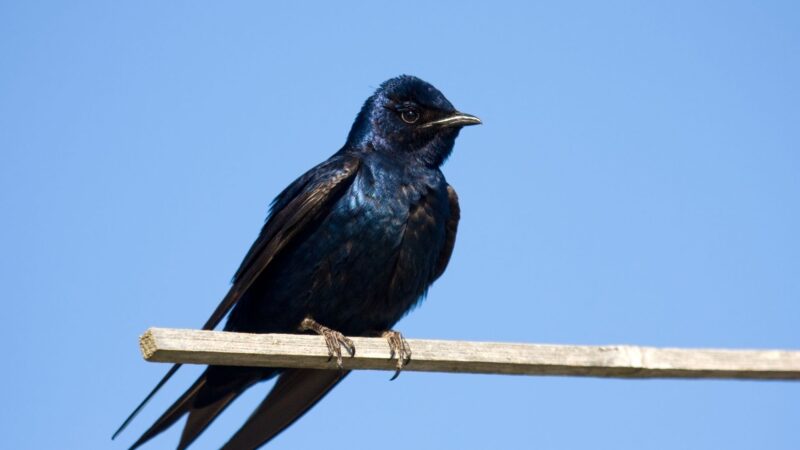
What Does a Purple Martin Look Like?
Characterized by its large and chunky body, small head, broad chest, hooked bill, long and tapered wings, and forked tail, Purple Martins are known for their distinctive, deep purple plumage.
However, only males have this coloring with a sheen on it which is more pronounced on their heads and backs. Whereas females are a duller grayish blue or gray color.
On average, Purple Martins measure comparably between a sparrow and an American robin. They are 18 to 22 centimeters long with a wingspan of 39 to 43 centimeters and weigh around 10 to 55 grams.
What Do Purple Martins Eat?
Purple Martins are mainly insectivores and feed by catching food mid-flight. 23% of their diets consist of wasp and bees, flies (16%), assorted bugs (15%), and beetles (12%).
They change their preferences depending on the weather and availability of the insect species.
Where Do Purple Martins Live?
Native to North and Central America, Purple Martins migrate to southern regions during winter. They thrive in areas with open spaces like parks, wet meadows, dunes, and beaver ponds.
Ever since humans increasingly provided nest boxes for these birds, Purple Martins have become accustomed to living with them. In fact, eastern populations live almost exclusively in urban and suburban communities.
Related: How to Get Rid of Robins? | 8 Effective, Natural, and Humane Solutions
What Does a Purple Martin Sound Like?
Purple Martins have eleven different types of vocalizations used for a variety of purposes. It is a cacophony of creaky rattles and loud, throaty chirps used for mating, teaching their young, warning others for incoming predators, and many more.
When Do Purple Martins Nest?
Breeding season usually begins in March but egg-laying may not begin until June. This timeframe, however, depends on the region.
Females lay 3 to 8 white eggs, producing 1 to 3 broods annually. Young birds can immediately begin reproduction in the following breeding season.
Related: How to Prevent Birds Nesting in Roof? | Information and Control Guide
Where Do Purple Martins Nest?
Purple Martins are social cavity nesters, which means they construct nests in tree holes or nest boxes near other birds.
In eastern North America, Purple Martins seek out manmade birdhouses referred to as martin houses. These are usually gourds made out of plastic and hung on tree racks.
Related: How to Keep Birds From Nesting on Porch? | The Effective Guide
Are Purple Martins Aggressive?
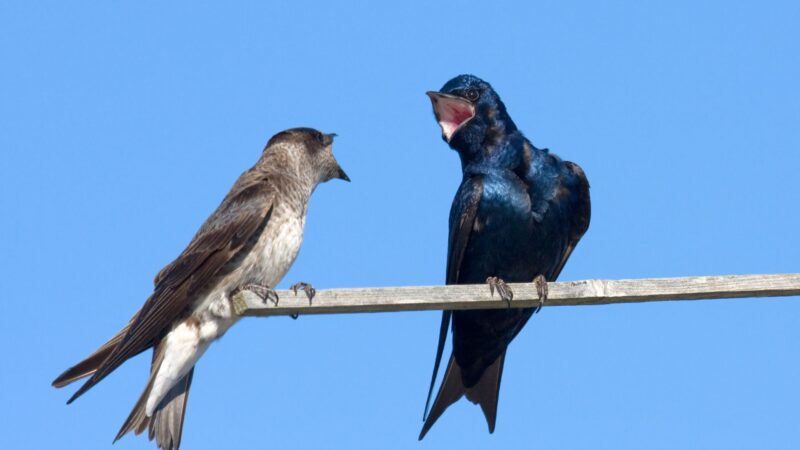
Not towards other humans, but there are definitely observed instances of Purple Martins becoming aggressive towards other birds—both in the same and other species.
Like other birds, they become territorial during the breeding and nesting season. However, their aggressive behavior usually consists of specific postures (i.e., looking threatening) and sounds.
Only when intruders truly trespass their territories and attack their nesting areas themselves will the birds resort to biting, wing hitting, or other forms of assault.
Why You Should Get Rid of Purple Martin?
Purple Martins have an important ecosystem role of being pest controllers. However, they can become pests themselves when they discover suitable nesting sites on your property.
Moreover, they release unsightly droppings that may cause structural damage and become a health hazard. They may also compete with other native birds with food, especially from bird feeders.
Related: How to Get Rid of Blackbirds From Bird Feeder? | 8 Effective Ways to Know
How to Get Rid of Purple Martins?
Bird Gels and Slides
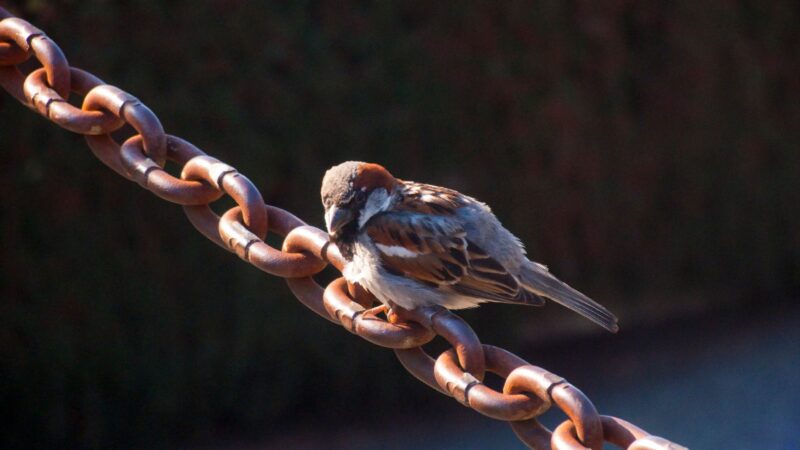
Bird gels are chemical repellents that are applied on areas where birds can perch. It contains a sticky substance that discourages the bird from landing on these locations.
- INNOVATIVE SOLUTION: Looking for a practical and humane...
- EASY INSTALLATION: Unlike bird spikes and similar products on the...
- EFFECTIVE FOR ALL BIRD SPECIES: The Bird Barrier gel solution was...
- ALL NATURAL AND SAFE: This bird deterrent optical gel is based on...
- INCREDIBLY VERSATILE: The bird repellent gel discs can be mounted...
- EFFECTIVE BIRD REPELLENT: Bird B Gone Transparent Bird Gel is...
- EASY APPLICATION & LONG-LASTING: Applying this bird gel repellent...
- VERSATILE BIRD DETERRING SOLUTION: Whether you need starling or...
- DISCREET & TRANSPARENT: Unlike other deterrents for birds, Bird B...
- TRUST BIRD B GONE: A leader in avian control products, Bird B...
Examine the Location of the Nest
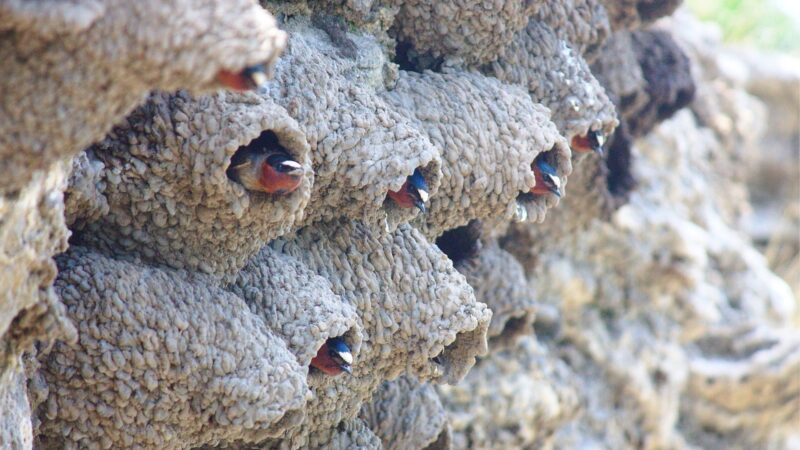
Regularly monitor around the property for any possible nesting areas. These sites should be barred or sealed immediately. This process involves pruning vegetation, sealing holes, or deconstructing birdhouses.
Home-Made Natural Repellent
Make a concoction of natural bird repellents using cayenne pepper, crushed garlic, essential oils, or vinegar diluted in water. Spray this around your property to get rid of birds and prevent them from coming back.
Installation of Spikes
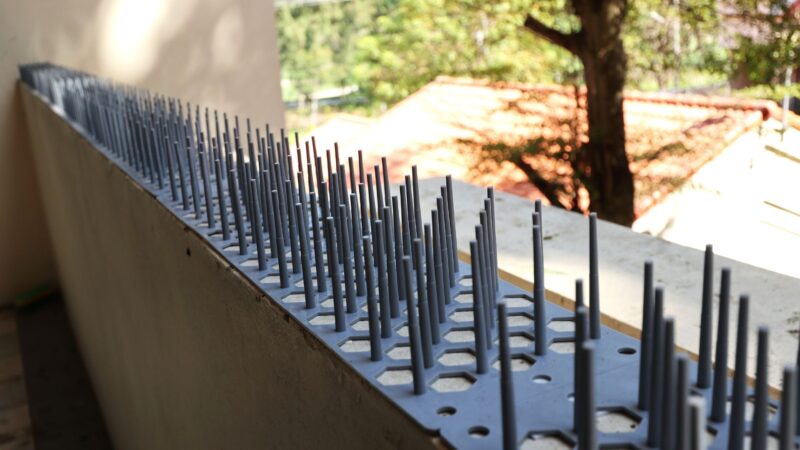
Good places to put these are on roofs, eaves, ledges, and other potential nesting, perching, or roosting sites. Ensure that the gap between the spikes are not too narrow or else the bird might still go through it.
- Efficient and Humane Bird Spikes: The stainless steel bird spikes...
- Durable: Made of high-quality 304 stainless steel, strong and...
- Full Width Coverage: The length of each spike is 100mm (4 inches)...
- Wide Use: Pigeon spikes can be installed in any area, very...
- After-sales Service: If you find any problems during use or...
- EASY TO ASSEMBLE AND INSTALL - This set of PANGCH pigeon spikes...
- WEATHER-PROOF STAINLESS CONSTRUCTION - PANGCH Bird spikes are...
- EASY TO MAKE A BETTER FIT - You can bend these stainless steel...
- If PANGCH bird spikes for pigeons do not perform to your...
- 【Package】The outdoor pigeon spikes kit includes 4 packs of...
- 【Material Composition】Pigeon spikes are composed of stainless...
- 【Simply installation】You can be installed on the base in just...
- 【Coverage】The bird control spikes have needles in each group...
- 【Widely used】Bird deterrents spikes can be installed along...
Purple Martin Bird Traps
Purchase or construct bird traps and strategically place them on your property. Simply follow the label on the product. Once you catch the birds, contact a professional wildlife officer to relocate them.
Use a Net
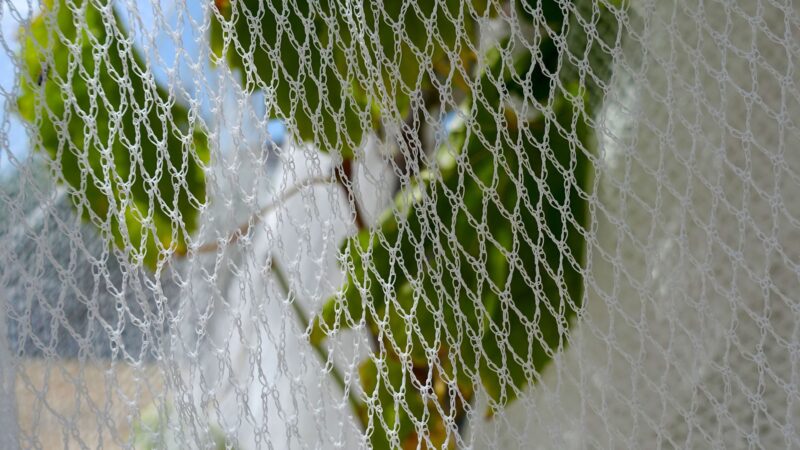
Cover nesting sites with mesh netting preferably anchored using a PVC frame. This will effectively block the Purple Martins from nesting.
How Do You Keep Purple Martins Away?
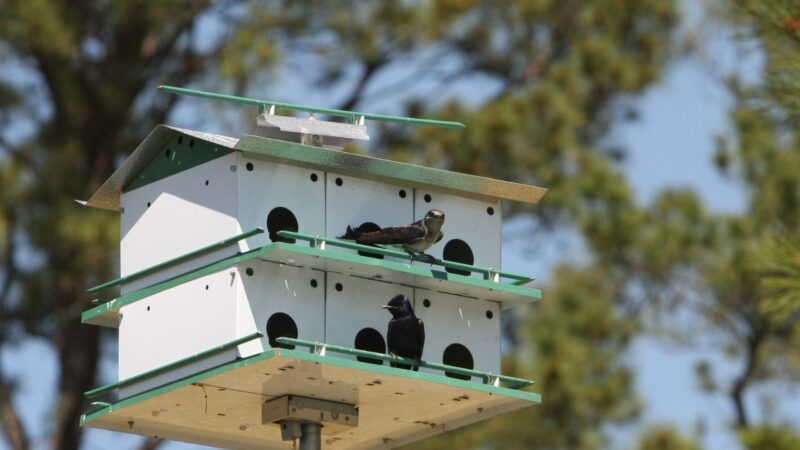
Cleanliness and consistent sanitation are the keys to keeping Purple Martins away. This includes pruning when necessary and removing existing nesting houses. If you can, switch to bird feeders that exclude small birds such as Purple Martins.
Related: How To Get Rid of Magpies by Scaring Them? | Tips and Guide for Keeping Them Away
List of Sources
All About Birds. (n.d.). Purple Martin: Progne subis.
Johnston, R. F., & Hardy, J. W. (n.d.). Behavior of the Purple Martin.
National Audubon Society. (n.d.). Purple Martin.
Snyman, N. (n.d.). Progne subis: purple martin.
Royer, E. (2021). Purple Martin ‘Landlords’ Manage a Different Kind of Tenant.
University of Missouri. (n.d.). Attracting Purple Martins to your Property.
- How to Get Rid of Copperheads | Practical Guide - August 27, 2023
- How to Get Rid of Corn Snakes | What Makes Them Aggressive? - August 27, 2023
- How to Get Rid of Alligators | Safety Measures and Removal Methods - July 16, 2023





